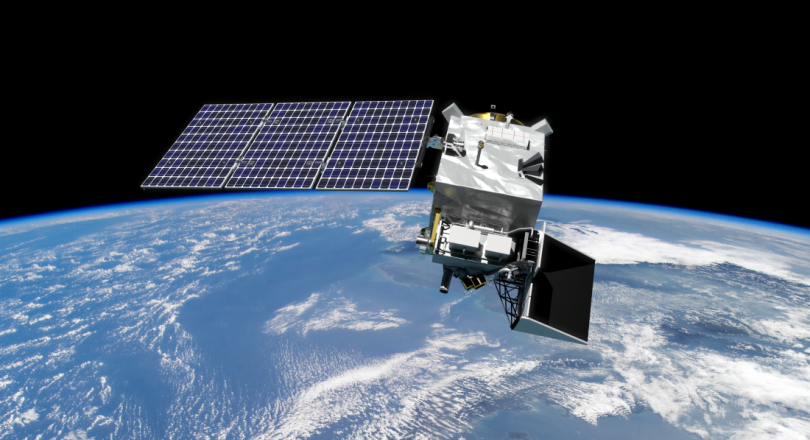
Proudly introduced last Friday: the SPEXone, a Dutch-made measuring device for measuring aerosols from space.
to update:
The launch was delayed twice due to weather conditions, but the PACE satellite carrying SPEXone on board was finally placed into orbit on February 8 at 8:30 a.m. by SpaceX's Falcon 9.
On Tuesday, February 6, NASA will launch the PACE satellite with the SPEXone measuring instrument on board, which was designed and manufactured in the Netherlands. This device will measure the presence and properties of small particles (aerosols) in the atmosphere. Scientists hope these measurements will help them better understand the impact of aerosols on global temperatures.
SPEXone is the result of a public-private partnership between the space organization SRON, the Dutch subsidiary of Airbus and the research foundation TNO. Last Friday, the tool was presented to interested parties at SRON in Leiden in the presence of outgoing Minister of Education, Culture and Science Robert Dijkgraaf.
Cooling and heating by particles
Aerosols are small particles in the atmosphere, including sea salt, particulate matter, and soot particles emitted by (forest) fires and fossil fuel combustion. Because these particles reflect sunlight, most of them have a cooling effect on the climate. In addition, they act as a condensation center for water droplets, making clouds more reflective. This also leads to cooling. However, aerosols can also absorb heat, actually increasing the Earth's temperature.
It is clear that aerosols have a net cooling effect, but the extent of the effect of particles is still not well known. The effect of aerosols on temperature is the largest uncertainty factor in future climate scenarios.
Spectrum and polarization
SPEXone measurements should change this. The device captures the light reflected by the aerosol and measures the spectrum (intensity of different frequencies of light) and polarization (direction of vibration of electromagnetic radiation).
This allows it to not only determine how many aerosols are present in a given place, but also to distinguish between different types of particles. SPEXone determines properties such as size, composition, shape, and ability to absorb or reflect. By correlating these measurements with data on cloudiness and temperature, for example, researchers hope to better understand the relationship between cooling and aerosols.
Matryoshka
The SPEXone measures 10 x 20 x 30 centimeters, is composed primarily of aluminum and titanium, and weighs fifteen kilograms. The instrument monitors the Earth using a telescope that looks in five directions and thus captures light from different angles.
To save space, each instrument is housed inside another instrument: the spectrometer houses the telescope, and the telescope houses the polarimeter. “Sometimes we affectionately call them Matryoshkas,” says Winky van der Meulen of Airbus Netherlands, referring to wooden Russian dolls that contain smaller and smaller versions of themselves that fit together.
The device was designed and built in three and a half years, after it received the green light in 2019.

arousing?
The launch will take place on Tuesday at 7:30 a.m. (Dutch time) from the Kennedy Space Center in Florida. “In 3 days, 15 hours and 30 minutes,” Friday’s countdown showed (in minutes).
But isn't it a bit premature? Before lunchParty before knowing if the launch was successful? 'A launch is always exciting. “But this is not very complicated, and we have tested everything about the instrument,” says Aldert van Amerongen, head of Earth observation at SRON. “I have confidence in that.”
More and more accurate
When asked what could be improved in the next version of SPEXone, scientists responded that they would prefer to create more accurate aerosol maps. The pixels on the maps that SPEXone generates are now 4.6 x 5.4 kilometers in size.
And whether the results will ultimately impact climate and environmental policy? “Soot and harmful particles affect air quality,” says Otto Hasekamp, head of the SPEXone project from SRON. “To cool the Earth, we don't need to emit more aerosols, we need less carbon dioxide2.'
Dijkgraaf adds somewhat cryptically: “The uncertainties of science are the holes through which politics can swim.” Let's just say that it is easier for politicians to direct themselves if they know where it might lead them.
Opening image: NASA GSFC
If you found this article interesting, subscribe to our free weekly newsletter.

“Total coffee specialist. Hardcore reader. Incurable music scholar. Web guru. Freelance troublemaker. Problem solver. Travel trailblazer.”







More Stories
GALA lacks a chapter on e-health
Weird beer can taste really good.
Planets contain much more water than previously thought